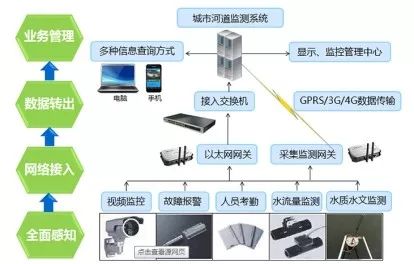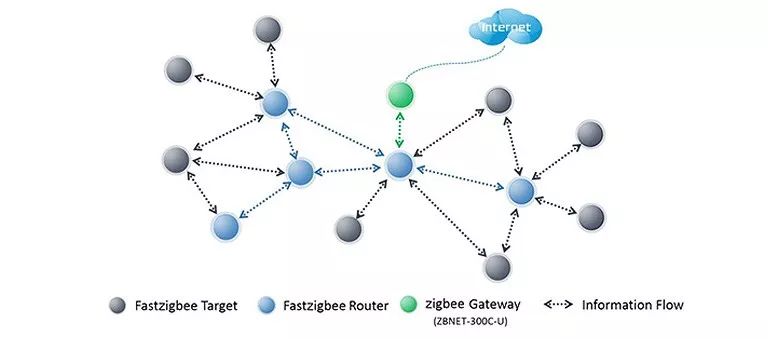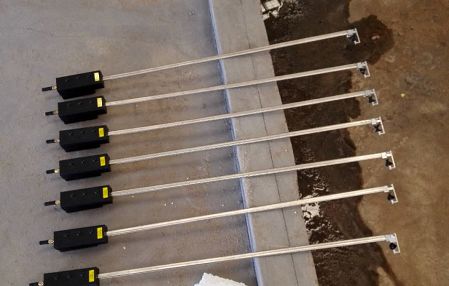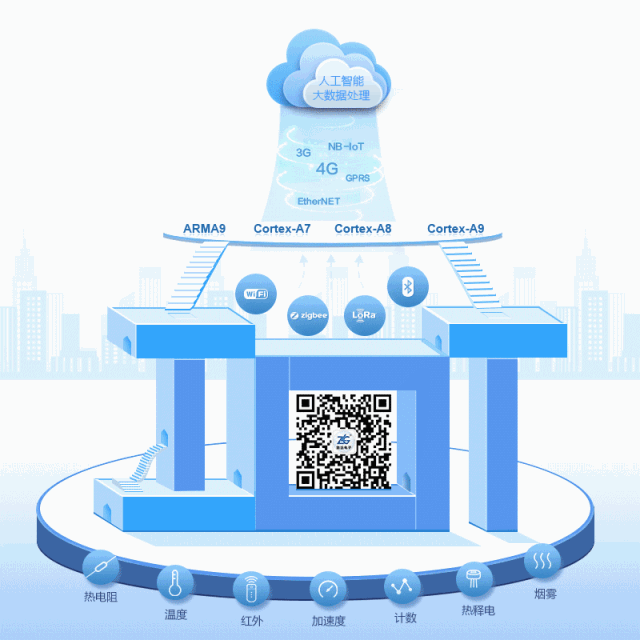
The era of smart cities requires a comprehensive enhancement of monitoring capabilities and intelligent management levels. With vast water areas in our country, more unmanned monitoring points will be established, making wireless data transmission particularly important.
The framework of the entire hydrological monitoring information system is shown in Figure 1, which is divided into four main parts: data collection, network access, data transmission, and business management. The collected information is transmitted via Ethernet to display the terminal information.

Figure 1 Hydrological Monitoring System Framework
In previous hydrological monitoring systems, real-time monitoring of multiple water levels was required, and related data needed to be sent in real-time to the river monitoring system’s terminal server for processing. Due to the vast water areas in our country, the dispersed monitoring points, and the remote and inconvenient transport in many areas, conventional wired methods are no longer applicable, making wireless communication the preferred solution.
ZLG Zhiyuan Electronics recommends a wireless implementation solution: collecting hydrological data from various sensor terminal nodes in the monitoring area through a Zigbee self-organizing network to gather it at the monitoring gateway, which then transmits the relevant data to the monitoring system via GPRS, enabling display and monitoring, with information available for query on computers, mobile phones, and other terminal devices.
Application Scheme of Zigbee Wireless Module on Flow Meters
In the hydrological monitoring environment, the number of monitoring points is large and dispersed, requiring intelligent and efficient network management. Due to the special nature of the environment, products are required to have low power consumption, with batteries replaced every six months to a year. Additionally, real-time communication reliability is essential. With a large number of nodes, there are also cost considerations. Zigbee technology is a short-range, low-complexity, low-power, low-data-rate, and low-cost bidirectional wireless communication or wireless networking technology, mainly suitable for carrying small data flows, can be embedded in various devices, and supports geographic positioning functions, making installation and maintenance simple, which is conducive to long-term maintenance and upgrades in the future.
The FastZigBee multi-form rapid networking protocol from Zhiyuan Electronics has the following characteristics:
-
Outstanding device startup speed, response speed, and data transmission efficiency
-
Network capacity can truly reach 65535 terminal nodes
-
Terminal node power consumption as low as 100nA, lower than the currently 100% Zigbee modules
-
Supports multi-level relay functions
-
The network has self-adjusting and self-repairing features
-
Supports multiple remote IO and remote AD
-
Supports short address functionality, freely modifiable according to user applications
-
Has a larger link budget
The Zigbee network structure diagram is shown in Figure 2, where within the signal coverage area, Zigbee networks can construct various types of network topologies, automatically networking, and finding the optimal path, establishing a communication network between multiple flow meters to send collected data in real-time.

Figure 2 Zigbee Network Structure
Figure 3 shows the flow meter scheme constructed using the Zigbee wireless module AW5161P2EF.

Figure 3 Flow Meter Testing Site with Zigbee Wireless Module
Based on the above scheme, using Zhiyuan Electronics’ mature AW516x series, a Zigbee network can be quickly established, with a single monitoring distance capable of transmitting 200 meters, showing excellent performance in actual tests. During the initial design phase, the Zhiyuan Electronics development kit: AW516x Demo Board (including two baseboards, two AW5161P2EF modules, and two antennas) can be used.

Figure 3 AW516x Development Kit
Combining Zigbee technology with GPRS technology for wireless hydrological monitoring systems is already a relatively mature solution. In terms of product selection, an overall assessment can be made based on the actual application scenarios.
Reply with the keyword 【Wireless Communication】 to see more related technical topics.
Official Account Introduction
Zhiyuan Electronics Official WeChat Account, a platform gathering 500 engineers for R&D testing sharing, providing you with leading products and technology solutions in the electronics industry..
